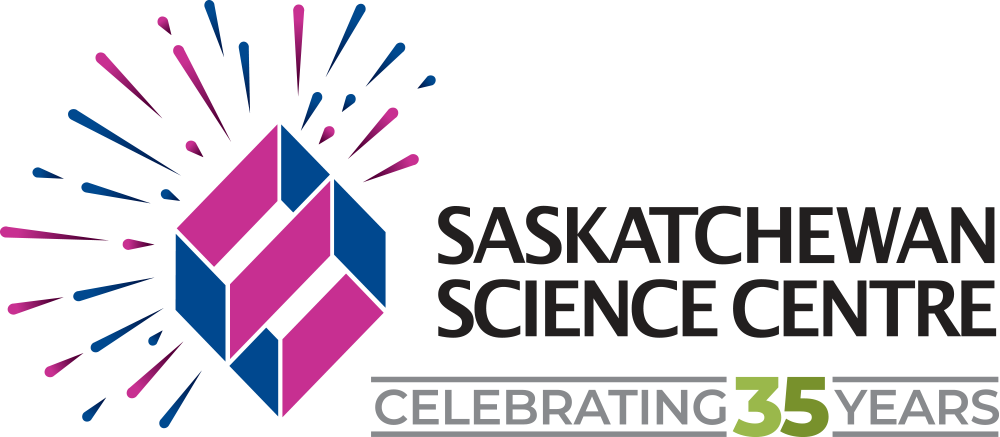In acknowledgement of National Indigenous Peoples Day, the Saskatchewan Science Centre is proud to be situated in Treaty 4 Territory, the traditional territory of the Cree, Saulteaux, Nakota, Lakota, and Dakota peoples, and the homeland of the Métis Nation.
As we embark on our journey to reconciliation, we are guided by First Nations in Treaty 4 and relatives to Treaty 4. We have learned that the path of reconciliation has no definitive roadmap, rule book, or checklist to follow. The journey for individuals and organizations, including the Saskatchewan Science Centre, will be aligned with Indigenous aspirations, through creative, and meaningful planning. We look to our community and partners to guide us as we work together to honour and uplift the critical role of (our local) Indigenous cultures.
Indigenous Ingenuity, our latest visiting exhibit, has proven to be a very positive learning experience for the Science Centre and our guests. Not only does it tell us the story of how the First Peoples adapted, and overcame the many challenges they faced, it also shows us how these innovations continue to be used today. It is that spirit of ingenuity and creativity that we can use as inspiration to create bridges between the many different cultures that call our community home.
The Saskatchewan Science Centre will also be hosting a number of activities throughout the day on June 21. Click here to view all of the fun things to do!
Free Admission to Indigenous Ingenuity - 6 PM to 9 PM
Free Admission to the Saskatchewan Science Centre and our visiting exhibition: Indigenous Ingenuity from 6 PM to 9 PM.
Walkups are welcome, but we recommend reserving your spot in advance here:
Free Screening of The Grizzlies - 7 PM
Free screening of The Grizzlies at 7 PM. Walk-ups are welcome, but we do recommend reserving your spot in advance here:
Other activities throughout the day
Dream Catcher Making
While learning to make a dream catcher, hear different traditional stories about dream catchers, the stages of sleep and the science behind dreams and nightmares, as well as the benefits of sleep and factors that influence sleep patterns, such as exercise, tiredness, and caffeine.
Did you know?
Indigenous cultures, such as the Cree, Ojibwe and Lakota people are known for their traditions with dream catchers. The woven web of the dream catcher traps nightmares and allows the pleasant dreams to fall through the feathers and go into the person experiencing REM sleep. There are four stages to sleep. The fourth stage, REM sleep, or Rapid Eye Movement sleep, is your primary dreaming stage. This is the optimal stage of sleep for a dream catcher!
Craft a Lacrosse stick
Gather outside on the grass and learn about the history of lacrosse and how to craft a lacrosse stick out of household materials. After making your lacrosse stick, learn some maneuvers and test out your creation!
Did you know?
Originally known as stick ball, lacrosse was invented by the Algonquian tribe in the St. Lawrence River. Soon, many other Indigenous tribes in Canada and the United States picked up the sport, making the sport a very popular game. Contrary to popular belief, lacrosse is the national sport of Canada.
Cracking the code!
Learn how to translate your name into binary code and bead a keychain using basic or traditional loom beading techniques. Traditional beadwork is also encouraged. Supplies included.
Did you know?
In WWII, Cree-speaking Indigenous Servicemen were recruited for a top-secret mission – to use the Cree language to transmit messages that would be translated back to English. This allowed allied forces to communicate without plans being discovered, as Germany was unable to crack the code of the Cree language, making Cree code talkers a very pivotal part of winning the war.


